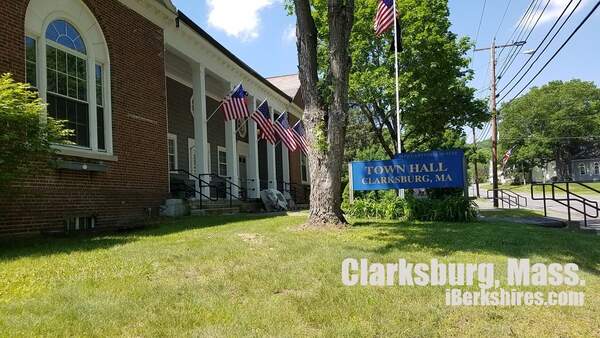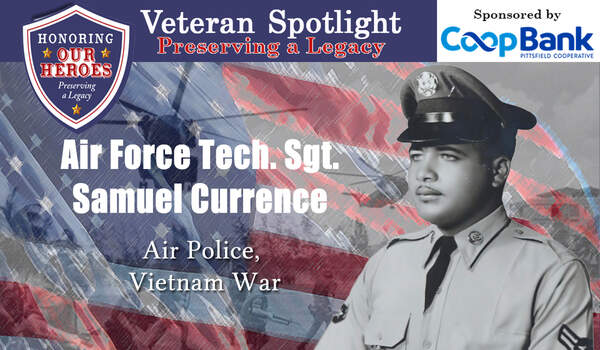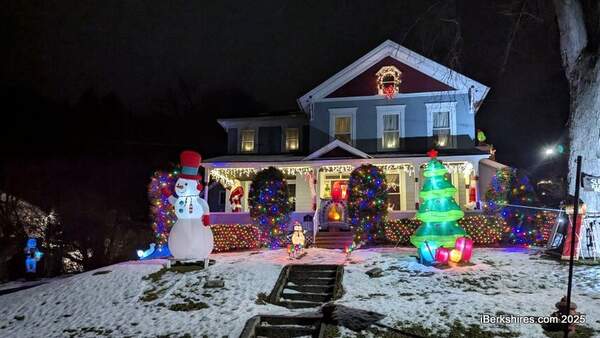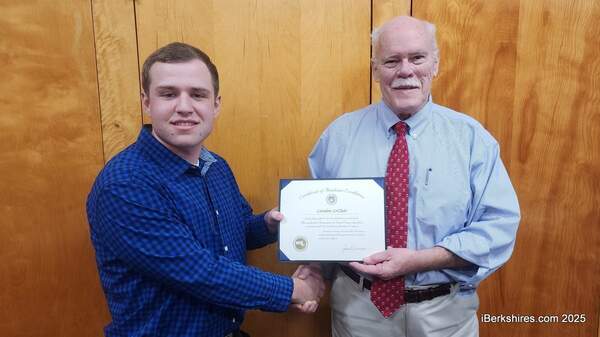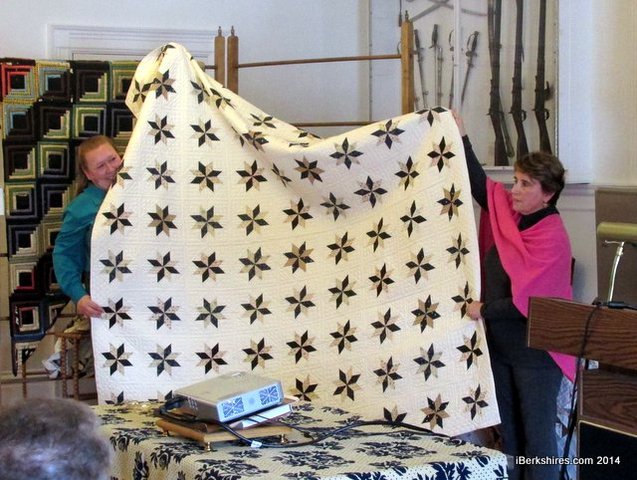
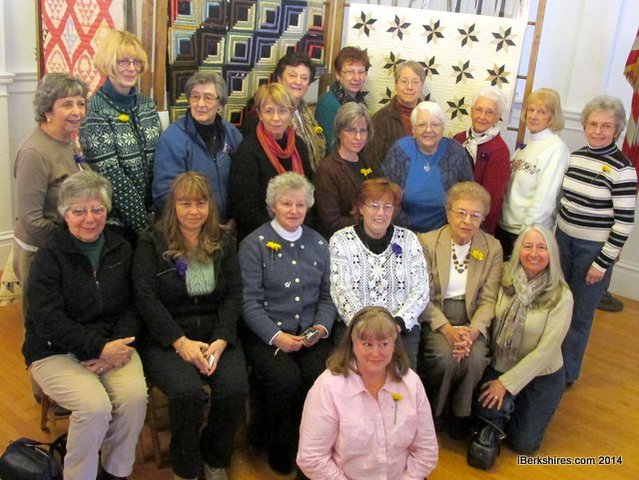
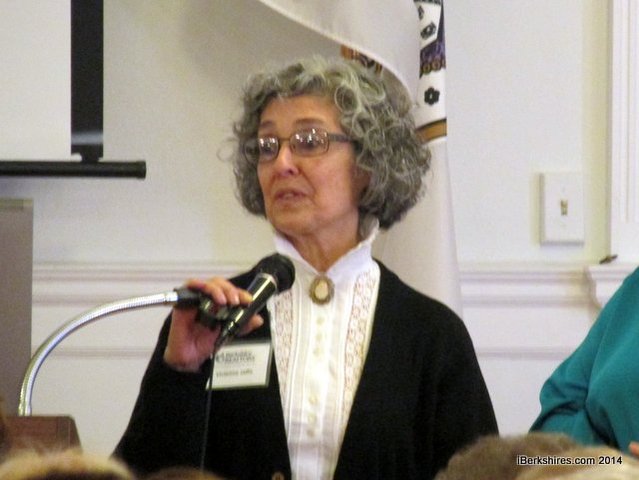
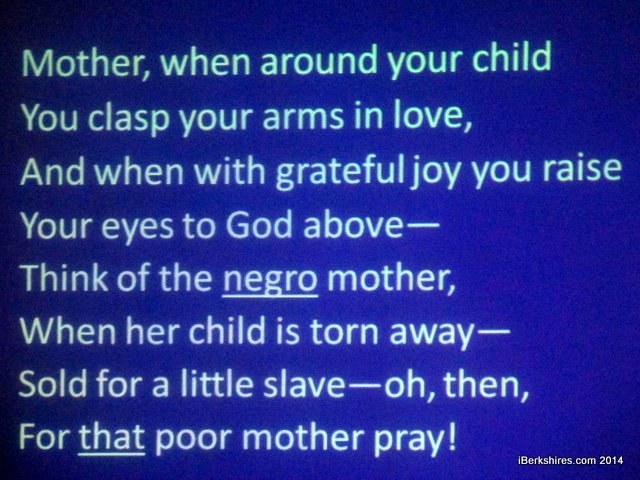
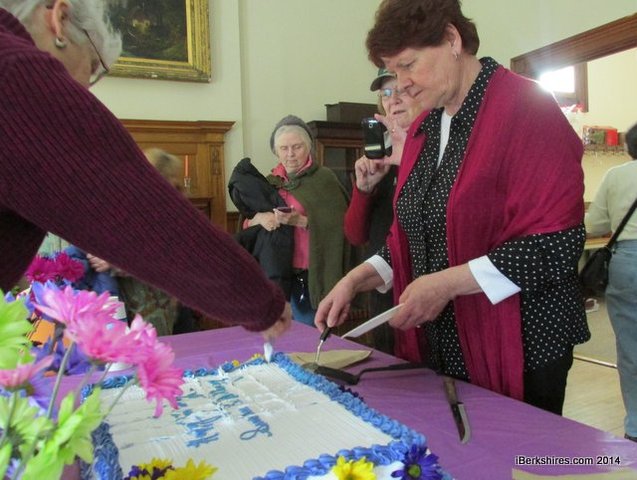
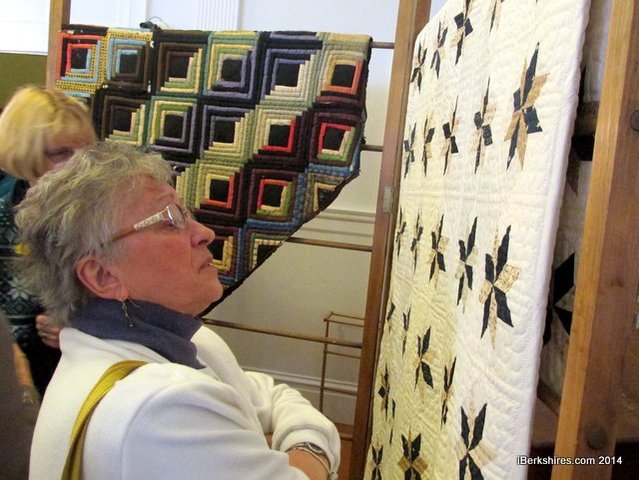
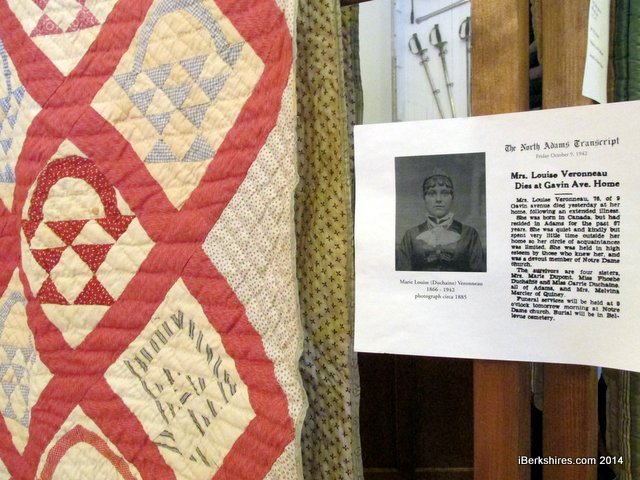
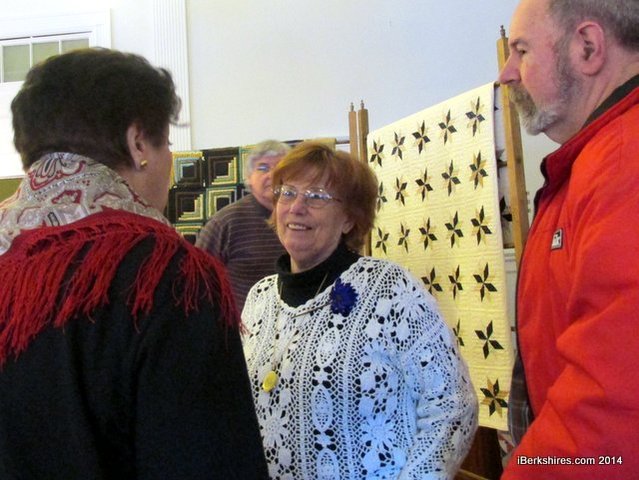
Anthony Replica Quilt Unveiled at Birthday Celebration
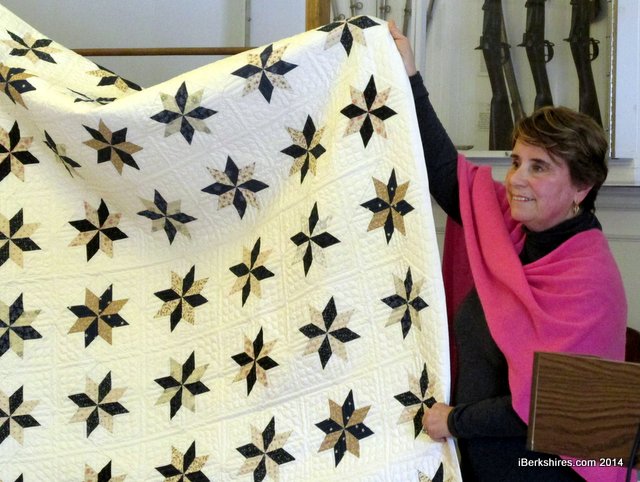 |
|
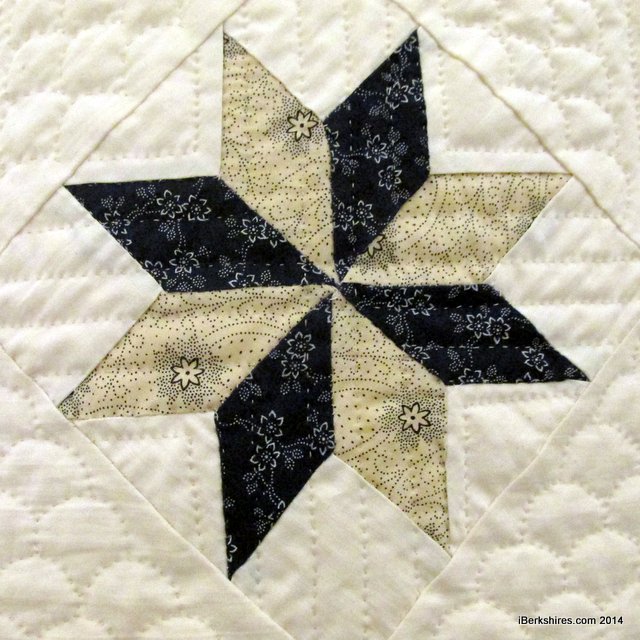 |
Susan B. Anthony Birthplace Museum founder and president of its board holds up the replica of a quilt made by Anthony at age 15. The quilt consists of 90 6-inch block star blocks with alternating plain blocks. |
ADAMS, Mass. — Susan B. Anthony is most often recalled as a rabble rouser, bold speaker and indefatigable activist for women's rights.
Less known was the Adams native's aptitude with a needle.
The Susan B. Anthony Birthplace Museum on Sunday unveiled a re-creation of a quilt made by the voting rights advocate at the age of 15.
Some 50 volunteers over more than two years worked on the replica quilt based on the original held at the Rochester (N.Y.) Museum and Science Center.
The LeMoyne Star is a technically difficult pattern in that eight separate pieces are used to create the eight-pointed star
"You have to bring together the points without making a bump," said Margorie Childers, a quilt historian and professor emeritus of Elms College. "If she could do that, my hat's off to her ...
"It makes us really respect her quiltmaking."
Childers, the guest lecturer at the annual Anthony birthday celebration held in the GAR Memorial Hall in the Adams Free Library, spoke on "Social Stitches: Women's Work — Women's Issues."
Like most women of the 19th century, Anthony learned her sewing skills at a young age, and is known to have made several quilts based on her writings as well as a surviving sampler with her parents wedding date and siblings' birthdays.
But the artistry of their efforts was not widely appreciated until the 1960s as the women's movement prompted scholarly research of the history of home arts and women like Julia Child "revolutionized" the way we look at cooking.
Childers began sewing in the costume shop at the University of Kansas and sought "how to reconcile" her own interest in women's arts and being scholar. She would earn degrees in nursing and sociology, while also becoming a quilt historian and certified appraiser.
"We began to appreciate what women had been doing and what they were capable of," said Childers, noting the first quilt exhibit at the Whitney Museum in 1971.
For the women of Anthony's time, their "home arts" were also critical to raising funds at a time when women had few rights to property or wages.
"So much of this was to raise funds," Childers said. "When women think about how we make funds, we thought about bake sales, and then we thought about bazaars."
Temperance fairs, suffrage speeches and anti-slavery rallies were accompanied by sales of baked and sewed goods and raffles. "You could buy all kinds of things made by skilled craftstmen to suppot the cause," she said, and Anthony "would work with women on their projects to show she was one of them."
Handmade goods could also carry a message to promote the particular causes.
Anthony's comtemporary, Lydia Maria Child, abolitionist and author of "Over the River and Through the Wood," sold a quilt at an anti-slavery rally for only $5. But the heart of the quilt was stitched with a poignant poem praying for the enslaved mother "when her child is torn away."
Anthony's 1835 quilt carries no messages, but rather questions. Carol Crossed, president of the museum's board, wondered how the young Susan had managed, working by candlelight with a lazy eye.
Had the material come from her father, Daniel's, textile mill? Or scraps from her sisters' dresses, or her mother's apron? And how did it manage to stay in the family when her bankrupt father had to sell "even the sugar in the sugar bowl?"
The original is in storage at the Rochester center because of its fragility. The Birthplace Museum was allowed to take photographs for research and match the colors from the 16 different patterned textiles.
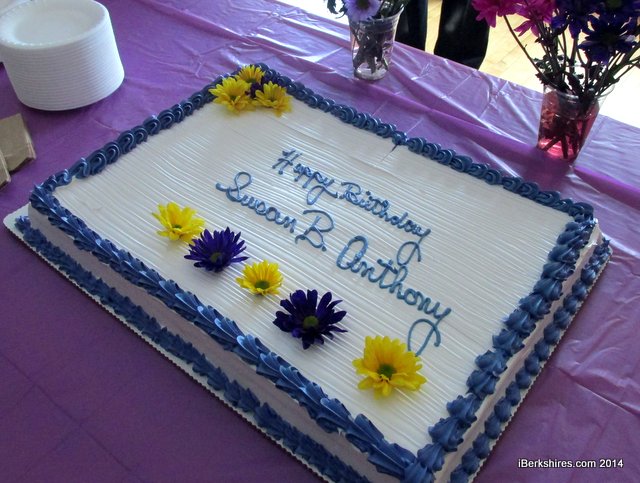 A birthday cake — sans 194 candles — made by Price Chopper was parceled out to the attendees. A birthday cake — sans 194 candles — made by Price Chopper was parceled out to the attendees. |
Gail Miller coordinated the project and Connie Logan of Great Barrington gave classes on hand-stitching to volunteers at the Ralph Froio Senior Center so they could replicate Anthony's handwork.
Volunteer Barbara Hyland got involved after overhearing a conversation about the project in a local quilting shop.
"A group of us cut out all the little pieces and made kits in baggies and distributed the kits to different groups," said Hyland, whose been quilting since 1998. The star kits came back completed and the group began meeting to stitch them together.
The completed top was then sent to Kansas, where the Leglar Barn Stitchers finished the quilt and stitched the top. The Kansas group was selected, said Crossed, because the state was celebrating its 100th anniversary of ratifying the 19th amendment, the seventh state to do so.
Colleen Janz, museum director, said the finish work was done as a public exhibit with the quilters in period costume.
The entire project took nearly four years and made as close as possible to the way Anthony would have some 179 years ago.
The quilt will be on exhibit in the birthing room at the Anthony homestead museum on East Road.
"There was certainly a lot of work in putting it all together, but a lot of fun, too," Hyland said. "And getting to meet new people involved in quilting."
Tags: birthday, local history, quilting, Susan B. Anthony,

